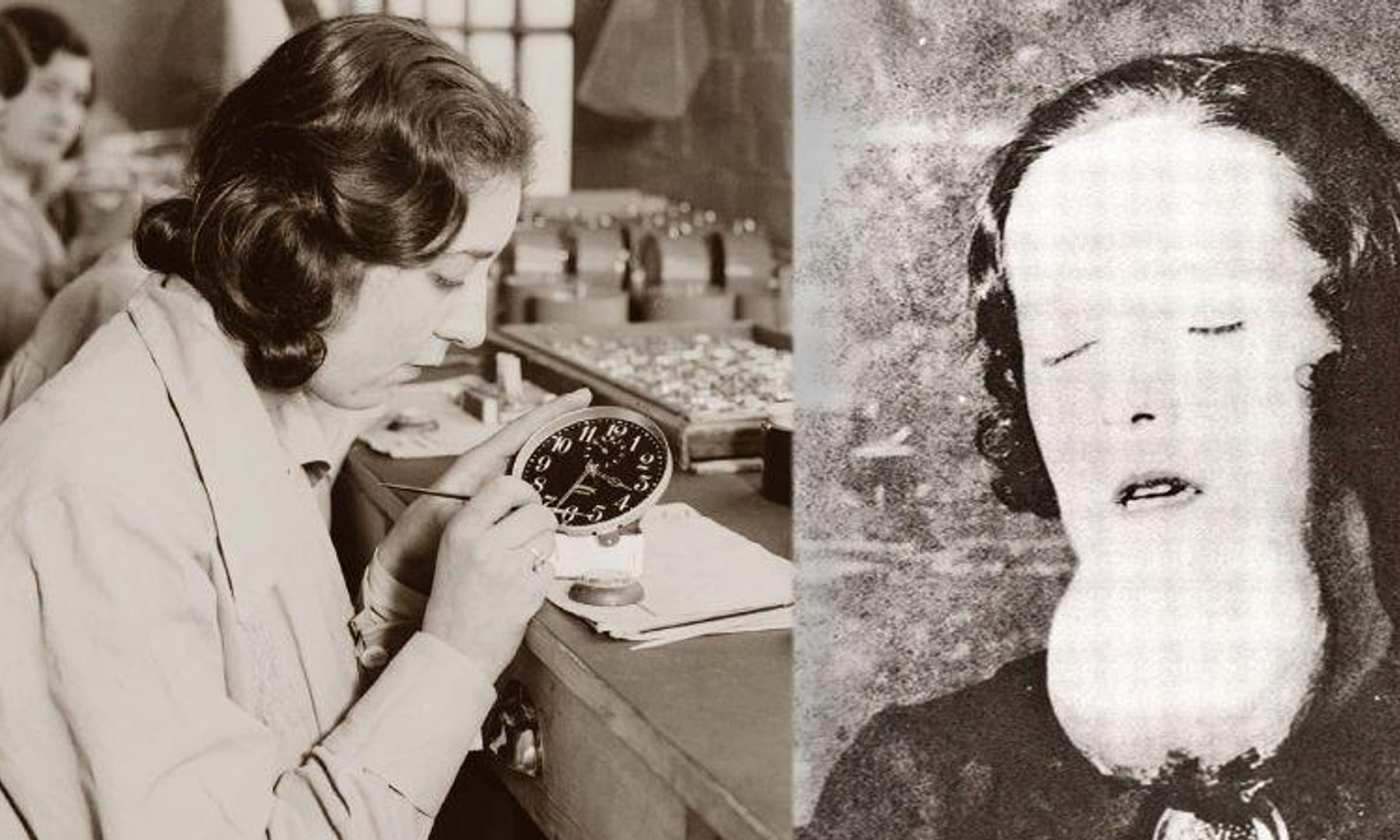
The exploitation of the Radium Girls by companies such as the United States Radium Corporation and the Radium Dial Company is yet another instance of the disregard for human life in pursuit of profit, and the severe damage unregulated labor practices can result in. In 1917, the US Radium Corporation opened a factory in Orange, NJ. Following that, Radium Dial opened another plant in Ottawa, IL and the Radium Company of Colorado opened another plant in Denver. Women made up almost 97% of the employment populus for these plants, hence the creation of the term “Radium Girls.” The employees at the New Jersey plant were “all women, mainly teenagers, who were recent immigrants to the USA. Most had minimal education. Some started working at the plant immediately after finishing grammar school. The women for the most part were very pleased to have the jobs” (Roberts 2017).
The job itself was “considered glamorous and patriotic” (Martinez et al. 2021), as the dials were painted for mainly, “ships and cockpits for the U.S. Navy and Army in World War I” (Coursey 2), though the novelty of radium products became so popular that the watches were eventually sold commercially as well. Employees were taught to paint with a technique called “lip-pointing” where they would wet the tip of the paintbrush in order to keep the stray brush hairs compliant. Lip, dip, paint. Like employees at Shein factories being paid “per item of clothing” (Kollbrunner 2021), the dial painters were compensated by the number of dials they painted, and fast painters could make up to $25 a week (approximately $400 today).
Some of the beginning symptoms the painters experienced were “toothaches, mouth sores, pain in the gums and jaws, aches and pains in their hips and feet” (Roberts 2017). By 1924, necrosis of the jaw was so common in these women and so symptomatically specific that dental surgeon Throdor Blum coined the condition “radium jaw” (Martinez et al. 2021).
The US Radium Corporation (USRC) vehemently denied any cases of radium poisoning. “A bulletin from 1924 insisted that “we are positive that our work is absolutely harmless… numerous rumors and misstatements of facts have been made by certain individuals. These have been injurious to our organization and individuals making same [sic] can be held for slander’” (Wink 21). Ironically, the USRC must have forgotten that in 1906, they published an article titled “Radium Dangers–Injurious Effects.”
The case was eventually taken to court in 1928, where Dr. Soshocky, inventor of radium paint and technical director at USRC admitted, “he had no definite knowledge that the girls had been informed of the ingredients, but believed they knew the paint contained radium” and when explicitly questioned if he had informed the employees of the dangers of radium, he said he, “was not sure but did not want to deny it” (5 Poisoned Women p. 21). The case was settled, but only because it had been extended for long enough that the women agreed they would not live to see the end of the trial. They were granted a one-time payment, a pension for every year of life, and past and future medical expenses, all paid by the USRC. That same year, Dr. Soshocky also succumbed to radium poisoning, and it was stated that although he was unwilling to speak of his maladies, “his front teeth are gone and his fingers up to the second knuckle are black, the result of radium necrosis” (Inventor Poisoned p. 3).
The surviving women did not live healthy lives. “Some women were stricken early and then endured a half-life for decades. One girl was bedridden for 50 years. Many suffered significant bone changes and fractures; many lost their teeth. Many developed bone cancer, leukemia, and anemia. Some were given blood transfusions for years. Some developed severe osteoporosis with collapsed vertebrae requiring multiple operations. Many had amputations” (Roberts 2017).
The crux of the Radium Girls’ story relates to the modern-day labor exploitation of Shein factories. Just as the Radium Girls were called to a job hiding dangerous work under false pretenses, workers in Shein factories are often subjected to unsafe conditions and low wages. Both cases emphasize the need for labor regulations to protect workers' rights and safety, as profit should never come before person.
Works Cited:
Primary
“5 Poisoned Women Face Court Delay; Hearings on Their Right to Sue Radium Company for $1,250,000 Adjourned to Sept. 24.EX-Employer Testifies Admits He Did Not Warn Them of Danger to Their Lives in Luminous Paint They Used.” The New York Times, p 21 The New York Times, 1928, timesmachine.nytimes.com/timesmachine/1928/04/28/91506854.html
“Inventor Poisoned by His Radium Paint; Dr. S.A. von Soshocky a Victim since 1920 of Malady Which Afflicted Five Women. Forced to High Altitudes Physician Who Risked Life to Save Others Refuses to Reveal If He Is Seeking a Cure. Brought Formula Here. Silent on Seeking of Cure. Two Other Suits Pending.” The New York Times, p. 3, The New York Times, 1928, timesmachine.nytimes.com/timesmachine/1928/06/08/95583732.html.
Secondary
Wink, Sophie. “The Capitalist System Is a System of Murder for Profit” Radium Girls in the Public Eye, 2021, scholarcommons.scu.edu/cgi/viewcontent.cgi?article=1266&context=historical-perspectives.
Coursey, Bert M. The National Bureau of Standards and the Radium Dial Painters, 2022, nvlpubs.nist.gov/nistpubs/jres/126/jres.126.051.pdf.
Martinez, Nicole E, et al. “Radium Dial Workers: Back to the Future.” International Journal of Radiation Biology, U.S. National Library of Medicine, 2021, www.ncbi.nlm.nih.gov/pmc/articles/PMC10563809/#:~:text=It%20wasn%27t%20…;
Roberts, William Clifford. “Facts and Ideas from Anywhere.” Proceedings (Baylor University. Medical Center), U.S. National Library of Medicine, Oct. 2017, www.ncbi.nlm.nih.gov/pmc/articles/PMC5595405/#:~:text=The%20new%20compa…;
Extras
Kollbrunner, Timo. “Toiling Away for Shein.” 19 Nov. 2021, stories.publiceye.ch/en/shein/
